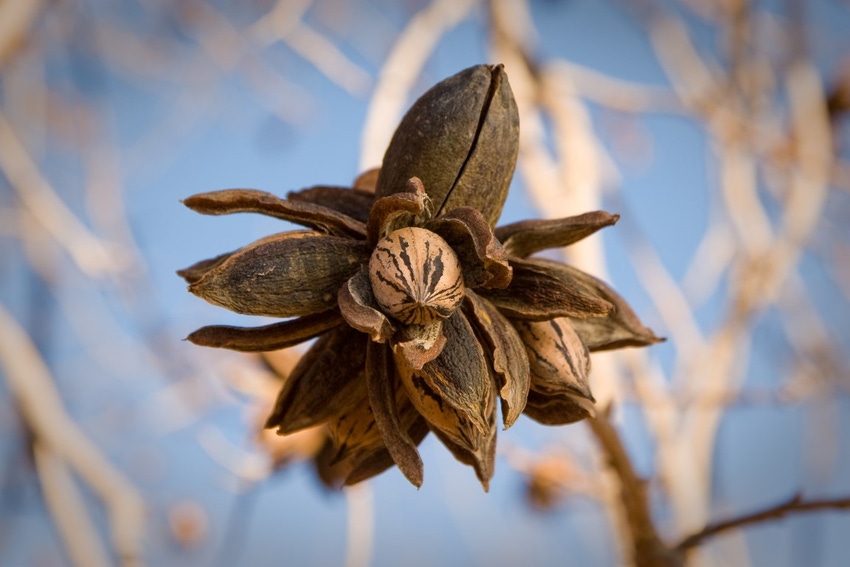
A proposed federal marketing order for pecans would raise funds to support and sustain a comprehensive marketing effort. The goal is to raise $6 million to $10 million to market pecans globally. The order would place a financial mandatory assessment on handlers, first buyers, and shellers who buy pecans from growers.
March 17, 2015

Industry taglines help sell products, including “Got Milk?” and “Where’s the Beef?” for example.
The tree nut industry has several taglines - “A can a week, that’s all we ask” (Blue Diamond Almonds) and “Sometimes you feel like a nut, sometimes you don’t” (Almond Joy).
The pistachio industry focuses its marketing on the nut health properties - “The Power of Pistachios.”
Welcome pecans to the marketing fold.
“Pecans don’t have to take a backseat to any food commodity in the health arena,” said Texas pecan grower Mike Adams, who serves as the president of the American Pecan Bureau (APB).
“The positive features of our commodity need to be better known by the entire world. The story we have to tell is a great one - we’ve just not told it very well.”
Federal marketing order
The APB wants to change the perception of pecans. Shortly after the board was established in 2013 to represent all segments of the industry, APB has consulted with the USDA to possibly create a federal marketing order (FMO) for pecans.
According to the organization, “An FMO was deemed the appropriate solution to raise sufficient funds to support and sustain a comprehensive marketing effort with an anticipated positive impact similar to the successes of almonds, walnuts, and pistachios.”
Adams said, “It works for others and our consensus is that this is the best route for us to go. We’re recommending to stakeholders that we move forward.”
According to the APB President, the order would involve a mandatory financial assessment on handlers, first buyers, and shellers who buy pecans from growers. APB hopes to raise $6 million to $10 million to elevate its marketing efforts.
It’s a number similar to the pistachio industry when they expanded their marketing budget from $400,000 to $10 million in 2006-2007.
In January, the APB sat down with the Food and Drug Administration to create the details.
“Since that time, we’re going to the industry and rolling out the details of the proposed order. In May, we hope to submit the final order to the USDA for approval,” Adams said.
Industry discussions
Currently, the U.S. produces nearly 300 million pounds of pecans annually in 15 states. Of the total, 36 percent of the nation’s crop is grown in the eastern states; 31 percent in the central region; and 32 percent from western states.
The APB is discussing the FMO proposal with producers and others in the pecan food chain.
“We’re trying to do this project right by listening to the folks in the field,” Adams explained. “They need to feel like they have a stake in this and will benefit from it.
“Although it isn’t a done deal until the referendum is passed, perhaps as early as September 2016, we’re making headway and positive momentum is in our favor.”
Arizona pecan grower and sheller Bruce Caris is the executive vice-president of Green Valley Pecan Company. He favors the establishment of the marketing order.
Green Valley is possibly the largest pecan grower in the world and one of the world’s top five pecan processors.
“There’s strength in unity,” Caris said. “This federal marketing order would raise funds to create awareness and promote our product worldwide.”
He added, “The focus of these dollars would create recognition of the health and nutritional benefits of pecans in the U.S., as well as work to open up new markets in the world.”
Pecan production is spread across the country so it’s harder as an industry to come together and decide the best way to market pecans. It may be easier for the almond, walnut, and pistachio industries since all commercial production is located in less than a handful of states.
Adams noted, “Marketing works and we want to increase product demand. Our commodity is viewed favorably, and in some cases, preferred to our sister tree nuts”
“We’re a great story to tell and a marketing order will facilitate telling that story with (hopefully) a resulting increase in meat prices for shellers, more net dollars for handlers, and higher farm prices for growers,” Adams concluded.
You May Also Like



